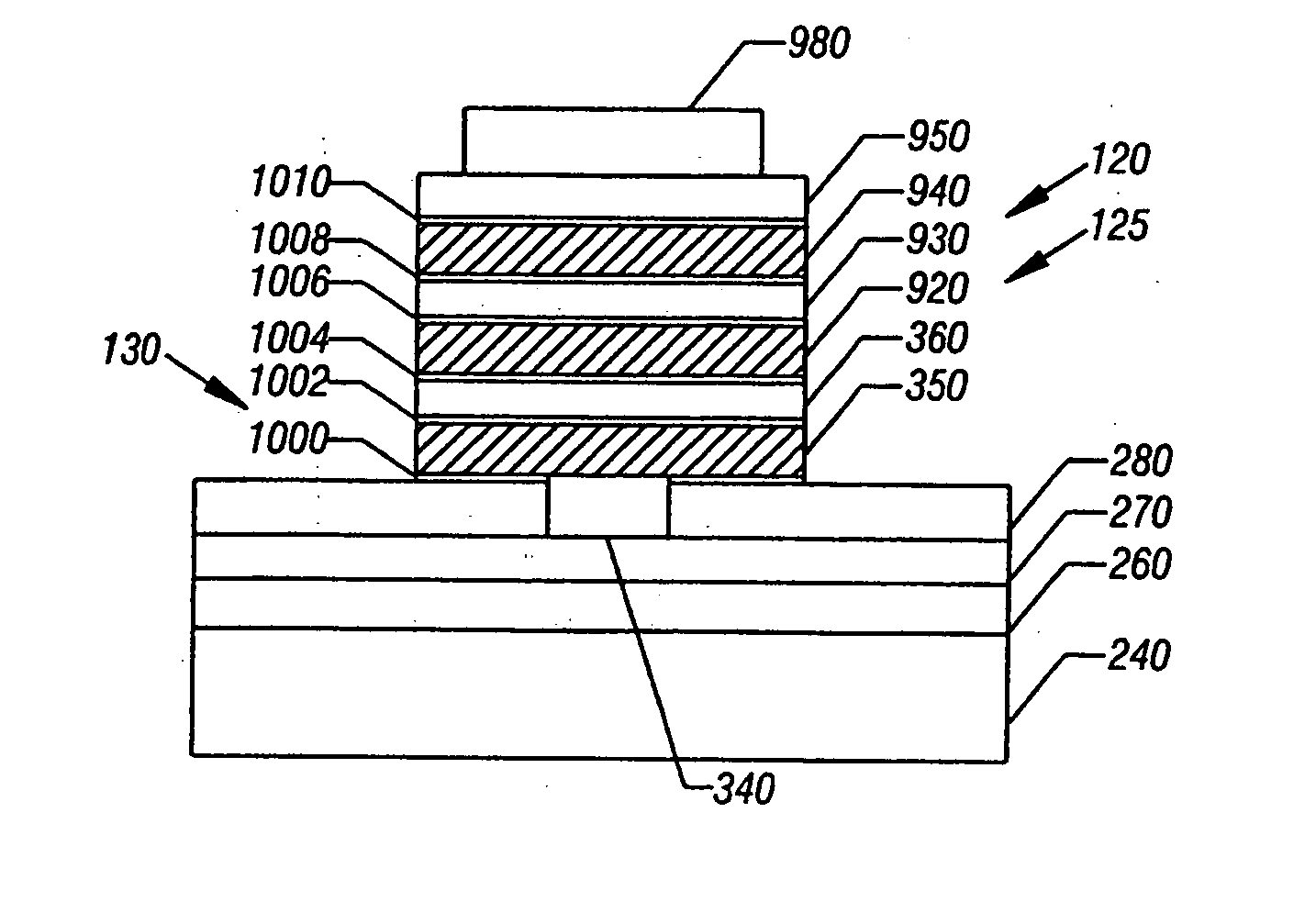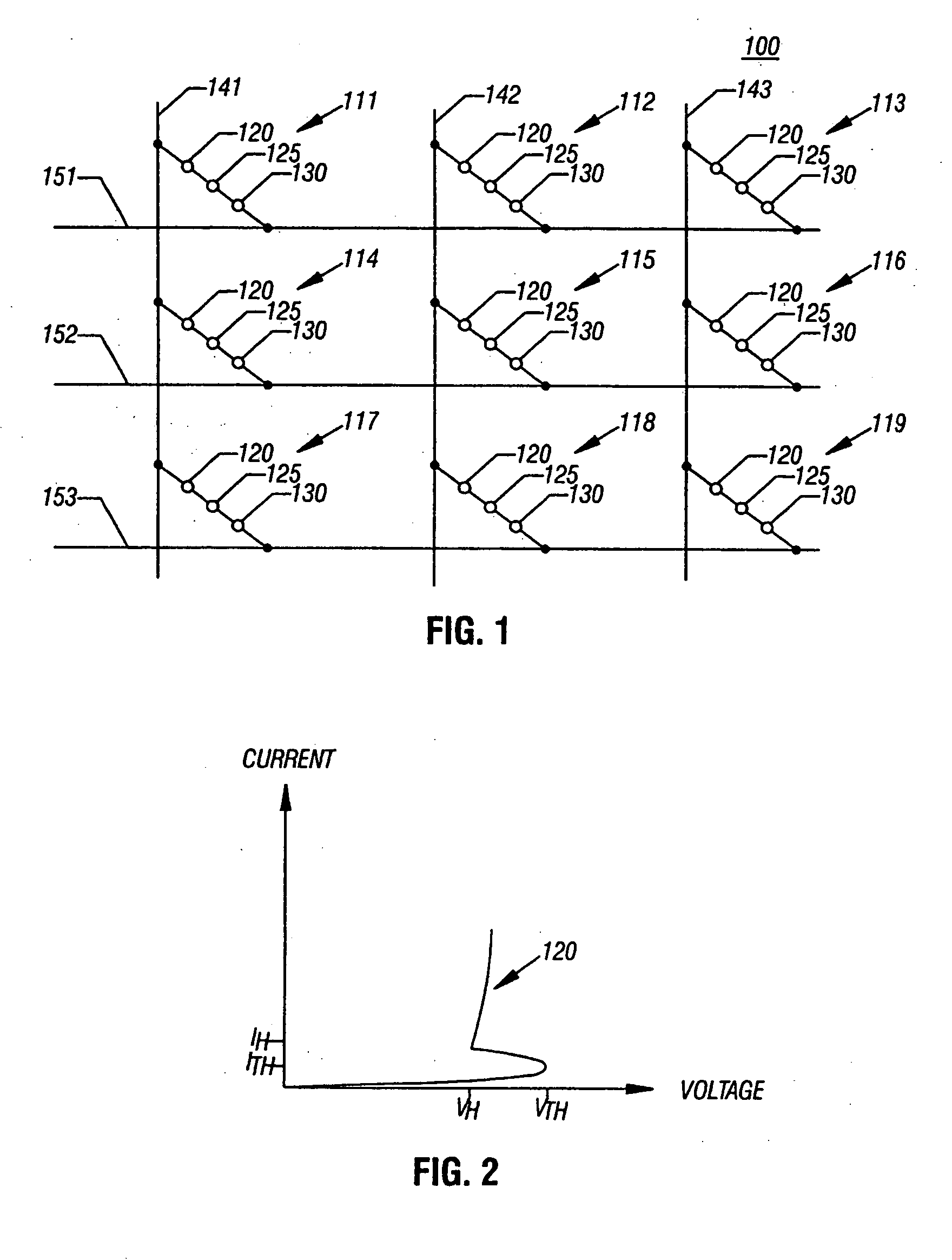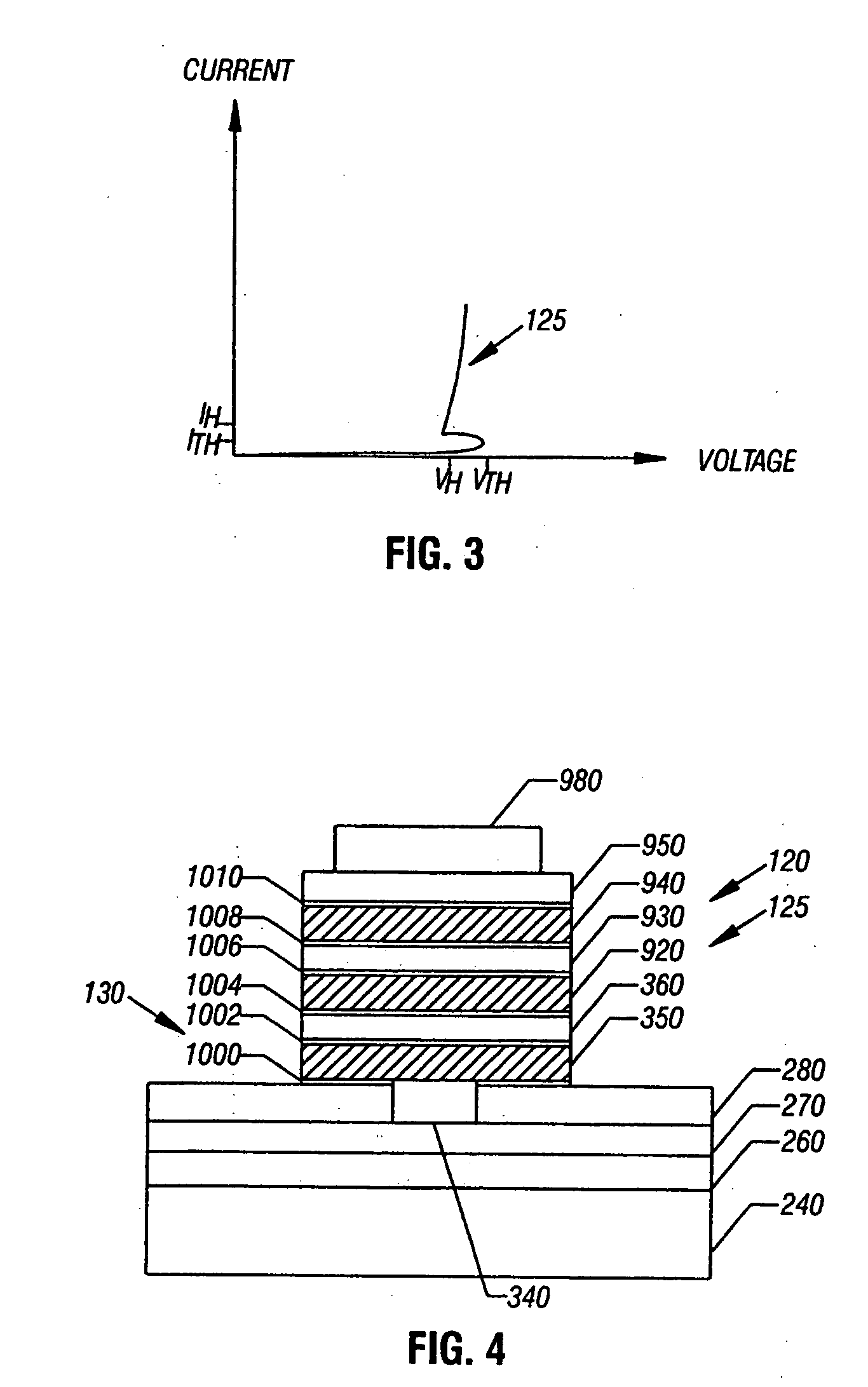Phase change memory device having an adhesion layer and manufacturing process thereof
a memory device and adhesion layer technology, applied in the direction of semiconductor devices, basic electric elements, electrical apparatus, etc., can solve the problems of destroying the phase change capability and difficult to integrate gst alloys into semiconductor processing, and achieve effective reduction of titanium diffusion, good adhesion, and less diffusion
- Summary
- Abstract
- Description
- Claims
- Application Information
AI Technical Summary
Benefits of technology
Problems solved by technology
Method used
Image
Examples
Embodiment Construction
[0016]FIG. 1 shows an embodiment of a memory 100. Memory 100 includes an n×n array of memory cells 111-119, each including a first select device 120, a second select device 125, and a memory element 130.
[0017] Memory elements 130 comprises a phase change material and thus may be referred to as a phase change memory. A phase change material is a material having electrical properties (e.g., resistance, capacitance, etc.) that may be changed through the application of energy such as, for example, heat, light, voltage potential, or electrical current. Examples of a phase change material include a chalcogenide material.
[0018] Memory 100 includes column lines 141-143 and row lines 151-153 to select a particular memory cell of the array during a write or read operation. Column lines 141-143 and row lines 151-153 may also be referred to as word lines or address lines since these lines are used to address memory cells 111 -119 during programming or reading. Column lines 141-143 may also be...
PUM
| Property | Measurement | Unit |
|---|---|---|
| thick | aaaaa | aaaaa |
| thickness | aaaaa | aaaaa |
| resistance | aaaaa | aaaaa |
Abstract
Description
Claims
Application Information
 Login to View More
Login to View More - R&D
- Intellectual Property
- Life Sciences
- Materials
- Tech Scout
- Unparalleled Data Quality
- Higher Quality Content
- 60% Fewer Hallucinations
Browse by: Latest US Patents, China's latest patents, Technical Efficacy Thesaurus, Application Domain, Technology Topic, Popular Technical Reports.
© 2025 PatSnap. All rights reserved.Legal|Privacy policy|Modern Slavery Act Transparency Statement|Sitemap|About US| Contact US: help@patsnap.com



